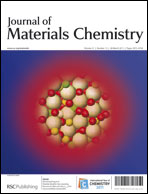The present study demonstrates the beneficial effects of ultraviolet (UV) light irradiation on the electroless deposition of several n-type semiconducting oxide thin films from an aqueous solution. To obtain ceria (CeO2), Ce3+ was oxidized to a higher valence in the presence of dissolved oxygen molecules and was then precipitated as CeO2 on a conductive substrate through a local cell mechanism. Irradiation of the substrate by UV light during the reaction caused the generation of photocarriers (electron and holes) in the surface oxide layer. The resultant photocarriers enabled further electrochemical reactions on the surfaces of the pre-deposited CeO2 nuclei together with the substrate surface. As a result, the deposition rate and crystallinity of the film were significantly improved by UV light irradiation. CeO2 thin films prepared on a Pt substrate by the proposed photoelectroless deposition method showed electrocatalytic activity for methanol oxidation without post-annealing, in contrast to the lower activity of a film deposited in the dark. This discrepancy is discussed on the basis of film morphology and crystallinity. Furthermore, it was confirmed that the electroless deposition of Sn and Pr oxide (hydroxide) was also accelerated by photoirradiation. In this paper, the photoelectroless deposition mechanism is discussed in detail, and the advantages of the proposed techniques are clarified.

You have access to this article
 Please wait while we load your content...
Something went wrong. Try again?
Please wait while we load your content...
Something went wrong. Try again?


 Please wait while we load your content...
Please wait while we load your content...